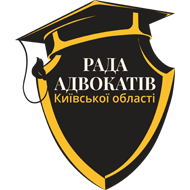At the core of any legal assistance lies not only a legal fact, but also a person. That’s why today effective legal practice is impossible without a conscious approach to interacting with the client. Formally, it’s work under a contract. But in reality, it’s about building trust, managing expectations, deep understanding of needs, and professional communication.
Trust as the Foundation of Collaboration

The first step towards effective interaction is trust. It doesn’t arise automatically – it’s formed from the first minutes of acquaintance, strengthened by the lawyer’s actions, communication style, and transparency of decisions.
Trust is not just client comfort. It’s the foundation on which joint work is built, and on which loyalty, efficiency, and emotional perception of the outcome depend. It requires constant attention and time investment.
Managing Expectations: Avoiding Conflicts Before They Arise
A professional lawyer not only defends, but also manages the client’s expectations. After all, unexpressed or inflated expectations are sources of frustrations and conflicts. Quality interaction should include:
-
clear formulation of work stages;
-
discussion of possible scenarios;
-
agreement on responsibility boundaries and roles.
This creates a shared orientation towards the outcome and reduces the risks of misunderstandings.
Client Needs vs Positions: The Depth That Matters
A client’s legal problem is just the tip of the iceberg. Behind positions often lie needs: feelings of security, control, reputation preservation, emotional compensation. A lawyer who focuses only on positions risks not meeting expectations even with a formally successful solution.
Working with needs allows:
-
more accurately defining the desired outcome;
-
building partnership relations, not just providing formal services;
-
supporting the client not only legally, but also as a person.
Common Communication Mistakes with Clients
Even a high professional level doesn’t guarantee effective interaction if there’s a weak spot in communication. The most common mistakes include:
-
superficial listening or interrupting;
-
hasty assumptions;
-
ignoring the client’s individual context;
-
lack of communication purpose or plan;
-
attempts to “know better” without involving the client.
It’s also important to consider communication barriers: differences in professional jargon, perception channels, worldviews, or even the psycho-emotional state of a person under stress.
Tools for Building Strong Professional Relationships
Successful legal practice increasingly depends on soft skills that allow for creating long-term relationships of trust. Among such tools are:
-
Active listening: not just hearing, but understanding the subtext;
-
Empathy: the ability to put oneself in the client’s shoes;
-
Feedback: not avoiding difficult conversations;
-
Clear interaction rules: timings, communication methods, reaction boundaries;
-
Responsibility distribution: for the process, decisions, information.
Today, a lawyer is not just a legal professional, but a communicator, strategist, and partner for the client. Developing these skills is not a bonus, but a necessity in modern legal practice. Effective interaction is an asset that works for reputation, recommendations, and resilience in crisis situations.
The Kyiv Region Bar Association recommends to lawyer colleagues to pay attention to developing soft skills no less than studying new legislative norms. It’s at the intersection of professional mastery and human interaction that true legal trust is formed.



